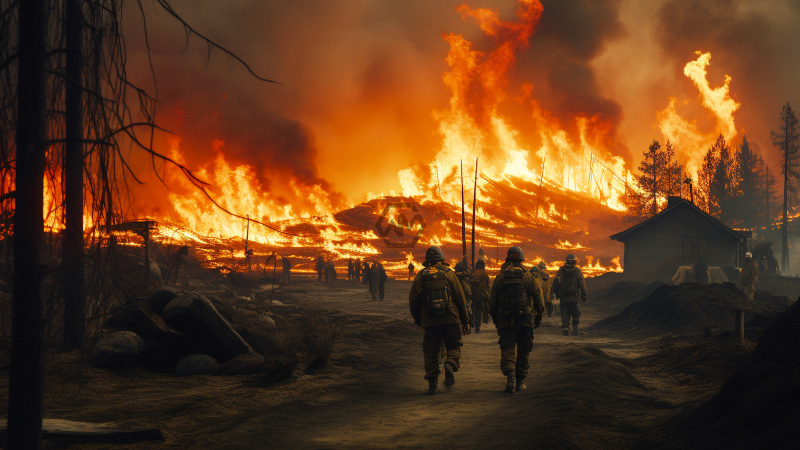- Devastating Impact: Over 37,000 acres burned, 11 deaths, and 12,000+ structures destroyed.
- Widening Evacuations: Brentwood and Encino face new mandatory evacuation orders.
- Firefighter Challenges: High winds, dry conditions, and water supply issues hinder containment efforts.
The Palisades Fire, the largest of six active wildfires in Los Angeles County, has burned over 21,000 acres and is only 8% contained. Overnight, its eastward spread triggered new mandatory evacuation orders in Brentwood and Encino, threatening densely populated areas.
Governor Gavin Newsom has called for an investigation into water pressure losses that hindered firefighting efforts. Health officials have issued warnings about poor air quality, with smoke and particulates posing immediate and long-term health risks.
California Wildfires Surge: Communities Under Siege as Flames Spread
The Eaton Fire, second only to the Palisades blaze, has scorched over 14,000 acres and remains 3% contained. Evacuation orders have been issued for areas near Mt. Wilson, while some residents in Glenoaks and Chevy Chase Canyons have been allowed to return home. Firefighters face steep terrain and unpredictable weather patterns as they work to limit the fire’s reach.
Containment progress has been more promising with smaller fires like the Kenneth Fire, which is now 50% contained, and the Hurst Fire, which is 70% contained. However, red flag warnings remain in place across much of Los Angeles County as conditions remain highly volatile.
Beyond the immediate threats, the fires have spotlighted systemic vulnerabilities. Reports of water supply issues, including a loss of pressure from local reservoirs, have raised concerns about infrastructure readiness in fire-prone areas. These challenges, coupled with stretched emergency resources, have complicated response efforts.
The public health emergency declared by Los Angeles County underscores the broader implications of these fires. Poor air quality, caused by thick smoke and fine particulate matter, poses a grave risk, especially to vulnerable populations. Residents are urged to stay indoors and use air purifiers where possible.
As California battles yet another wildfire season, the urgent need for enhanced fire prevention strategies and infrastructure resilience becomes increasingly clear.
”Natural disasters don’t wait. Neither should we.” — Anonymous



